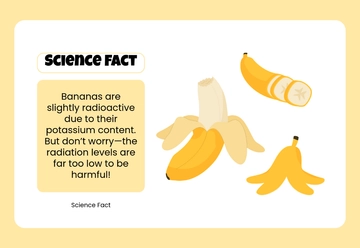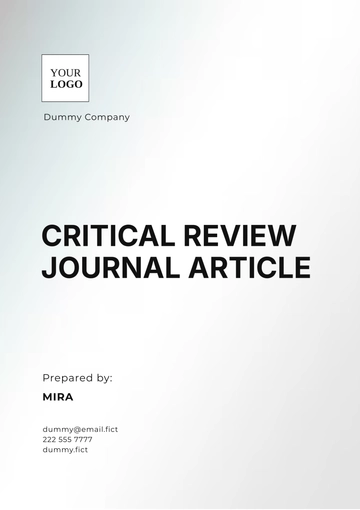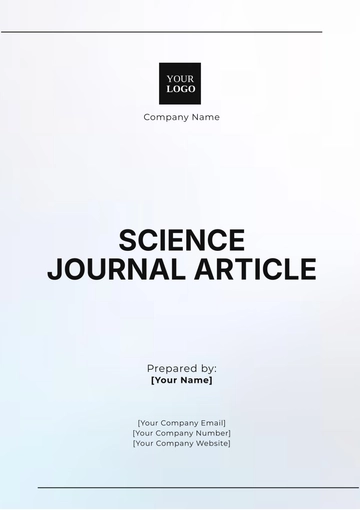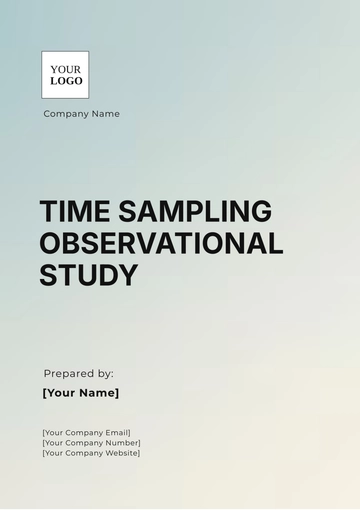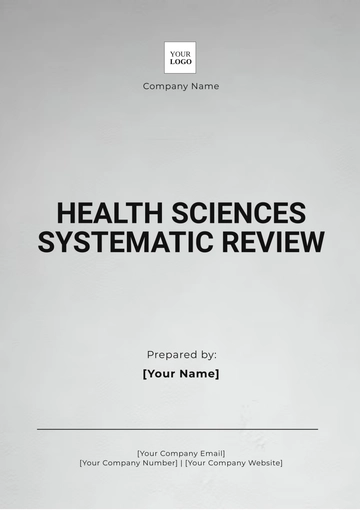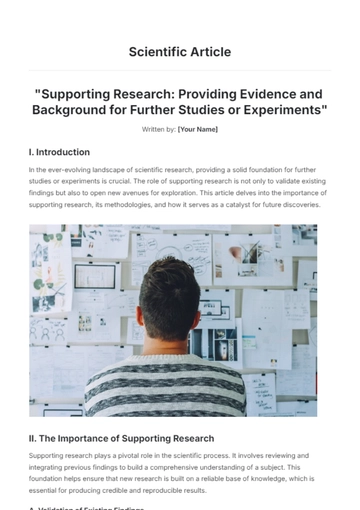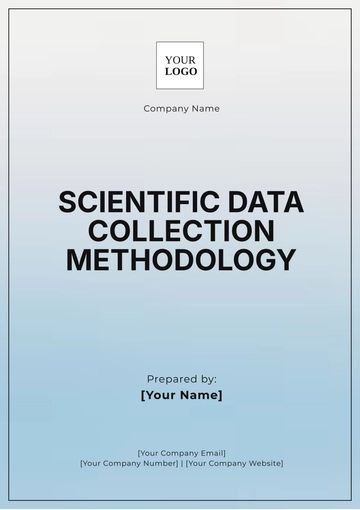Free Animal Study Protocol
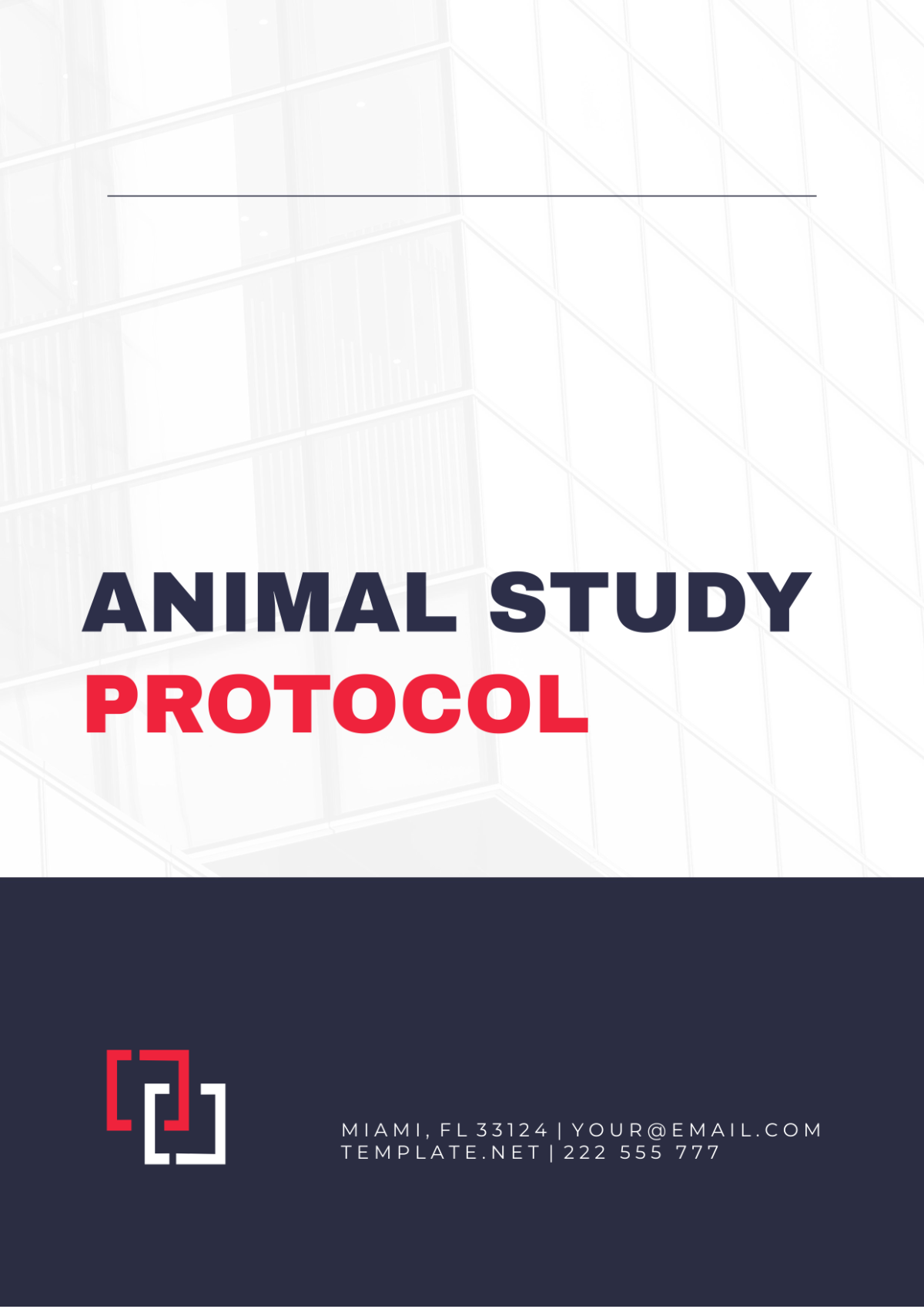
Name: | [Your Name] |
Company Name: | [Your Company Name] |
Department: | [YOUR DEPARTMENT] |
Date: | [DATE] |
I. Purpose
This Animal Study Protocol created by [Your Company Name] is a comprehensive framework designed to guide ethical and scientifically rigorous research involving animals. It ensures ethical treatment, animal welfare, and compliance with regulatory standards throughout the study. Emphasizing transparency, accountability, and best practices, the protocol covers experimental design, animal care, data collection, reporting, and regulatory compliance. Its goal is to promote responsible research practices, respect for animal subjects, and the advancement of knowledge in biomedical, veterinary, and behavioral sciences.
II. Experimental Design
Aspect | Description |
|---|---|
Objectives | Precisely defines research goals, hypotheses, and rationale for using animal models. |
Variables | Lists key variables and how they will be measured or controlled. |
Animal Models | Justifies the use of animal models based on relevance and ethical considerations. |
Procedures | Describe experimental protocols, timelines, and special considerations. |
Sample Size | Includes rigorous calculations for sample size, statistical power, and effect sizes. |
Randomization | Discusses methods for random assignment and bias reduction. |
Control Measures | Outlines strategies for controlling variables and maintaining internal validity. |
Bias Reduction | Integrates measures like blinding and standardization to enhance study reliability. |
III. Animal Care and Welfare Protocols
Housing Conditions: Specifies the type of housing facilities for animals, including cage size, bedding material, temperature, humidity levels, lighting, and ventilation to ensure comfort and well-being.
Environmental Enrichment: Describes strategies for providing enrichment activities such as toys, puzzles, social interactions, and environmental stimuli to promote natural behaviors and mental stimulation.
Veterinary Care: Outlines protocols for regular health checks, disease prevention, vaccination schedules, treatment procedures, and access to veterinary services for prompt medical attention.
Handling Procedures: Provides guidelines for gentle handling techniques, proper restraint methods, transportation protocols, and training for personnel involved in animal care to minimize stress and injury.
Pain and Distress Minimization: Includes protocols for assessing and monitoring pain, distress, and discomfort in animals. Describes analgesia, anesthesia, and humane endpoints for minimizing suffering during experiments.
Nutritional Needs: Specifies dietary requirements, feeding schedules, nutritional supplements, and water quality standards to ensure adequate nutrition and hydration for animals.
Behavioral Monitoring: Details methods for observing and recording animal behavior, assessing indicators of well-being, social interactions, and responses to environmental changes or experimental procedures.
Record Keeping: Emphasizes the importance of maintaining accurate records of animal care, health status, experimental interventions, adverse events, and any deviations from protocols for regulatory compliance and transparency.
IV. Data Collection Methods
Data Collection Tools: Specifies the instruments, equipment, software, and technologies used for data collection, including sensors, monitors, surveys, questionnaires, observation forms, and laboratory equipment.
Data Recording Procedures: Describes the process of recording data, including timestamps, identifiers, coding systems, and labeling conventions. Emphasizes consistency, accuracy, and completeness in data recording.
Data Storage Protocols: Outlines procedures for storing data securely, including encryption methods, access controls, backup systems, and data retention policies. Ensures confidentiality, integrity, and availability of data throughout the study.
V. Criteria for Assessing Outcomes
Outcome Parameters: Defines specific parameters and variables that serve as primary and secondary outcomes in the study. This ensures clarity and focus in evaluating the effectiveness and impact of interventions or experimental treatments.
Statistical Methods: Specifies the statistical methods and analytical approaches used to analyze outcome data. This includes descriptive statistics, inferential statistics, regression models, survival analyses, and other statistical tests to identify significant associations and trends.
Quality Control Measures: Includes measures for ensuring the quality, reliability, and validity of outcome assessments. This involves inter-rater reliability checks, data validation procedures, blinding techniques, and quality assurance protocols to minimize biases and errors in outcome assessment.
VI. Regulatory Compliance
The Regulatory Compliance section of this Animal Study Protocol emphasizes strict adherence to regulatory guidelines and ethical principles governing animal research. It aligns with the Animal Welfare Act, ensuring humane care and use of animals in research. The protocol also complies with Institutional Animal Care and Use Committee (IACUC) policies, providing thorough review and oversight of research activities involving animals. Additionally, it upholds international standards for animal welfare, promoting responsible and ethical conduct in scientific endeavors.
VII. Reporting and Documentation
The Reporting and Documentation section of this Animal Study Protocol outlines procedures for reporting adverse events and deviations from the protocol, ensuring transparency and accountability. It also includes guidelines for maintaining accurate records and upholding confidentiality of sensitive information. Additionally, provisions for data sharing, publication ethics, and adherence to regulatory requirements are detailed, promoting integrity and credibility in research outcomes.
VIII. Conclusion
The Conclusion section of this Animal Study Protocol highlights training requirements for personnel engaged in animal research, encompassing researchers, technicians, and caregivers. It emphasizes the importance of oversight mechanisms, such as regular inspections, protocol reviews, and post-approval monitoring, to ensure continuous adherence to ethical and regulatory standards throughout the research process. This section underscores the commitment to responsible conduct and the well-being of animals in research activities.
- 100% Customizable, free editor
- Access 1 Million+ Templates, photo’s & graphics
- Download or share as a template
- Click and replace photos, graphics, text, backgrounds
- Resize, crop, AI write & more
- Access advanced editor
Develop meticulous and reliable animal study protocols using Template.net's editable and customizable templates. Tailored to specific research parameters and ethical considerations, our protocols ensure precision and integrity in animal research. Integrated into our AI Editor Tool, managing and refining protocols is efficient, allowing for accurate and ethical conduct of animal studies across scientific research fields and applications.














